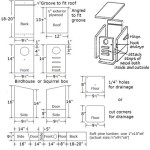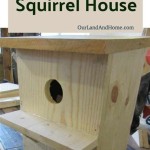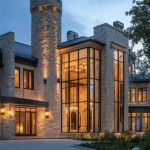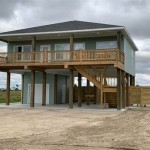Carriage House Building Plans: Design Your Dream Today 2024
The allure of the carriage house, a structure steeped in history and functionality, continues to resonate in modern architecture. Originally designed to house horse-drawn carriages, these buildings have evolved into versatile spaces suitable for a myriad of uses. From guest accommodations and home offices to workshops and recreational areas, a well-designed carriage house can significantly enhance property value and lifestyle. The process of realizing this dream, however, begins with carefully considered building plans. This article explores the key elements involved in creating effective carriage house building plans for 2024, taking into account contemporary design trends, regulatory requirements, and practical considerations.
Planning is paramount to a successful carriage house project. A haphazard approach can lead to cost overruns, structural issues, and ultimately, a building that fails to meet its intended purpose. The initial phase should involve a thorough assessment of the property, including soil conditions, zoning regulations, and existing structures. Understanding these factors will inform the design process and ensure compliance with local codes.
Furthermore, clarifying the intended function of the carriage house is crucial. Is it primarily for storage, a guest suite, a workspace, or a combination of these? The answer will dictate the size, layout, and features of the building. For instance, a carriage house intended as a guest suite will necessitate plumbing for a bathroom and kitchen, as well as adequate insulation and heating. Conversely, a storage-focused carriage house may prioritize accessibility and durable materials over aesthetic considerations.
Understanding Zoning Regulations and Building Codes
Navigating the complex landscape of zoning regulations and building codes is a critical step in the planning process. These regulations dictate permissible building sizes, setbacks from property lines, height restrictions, and other parameters. Failure to comply can result in costly delays, fines, or even the demolition of the structure. The specific regulations vary depending on the municipality, so it is essential to consult with local authorities or a qualified building professional. Some common zoning considerations include:
- Setbacks: The minimum distance a building must be from property lines.
- Height Restrictions: The maximum allowed height of the building.
- Lot Coverage: The percentage of the lot that can be covered by buildings.
- Easements: Legal rights granted to others to use a portion of the property.
- Historical District Regulations: If the property is located in a historical district, additional restrictions may apply to preserve the character of the area.
Beyond zoning, building codes address the structural integrity, safety, and energy efficiency of the carriage house. These codes specify requirements for foundations, framing, electrical wiring, plumbing, and insulation. Adherence to building codes ensures that the structure is safe and habitable. Seeking professional guidance from an architect or engineer is highly recommended to ensure compliance with all applicable regulations.
Moreover, consider the impact of the carriage house on the surrounding environment. Stormwater management, erosion control, and landscaping are all factors that may be subject to regulatory review. Implementing sustainable building practices, such as using recycled materials and energy-efficient appliances, can not only reduce the environmental footprint but also potentially qualify for tax incentives.
Designing for Functionality and Aesthetics
The design of the carriage house should seamlessly blend functionality and aesthetics. The layout should be optimized for the intended use, while the exterior should complement the existing architecture of the main house and surrounding landscape. Carefully consider the flow of movement within the carriage house, ensuring that spaces are easily accessible and that there is adequate natural light and ventilation.
For a carriage house intended as a guest suite, a well-defined living area, bedroom, bathroom, and kitchenette are essential. Privacy is also a key consideration, particularly if the carriage house is located close to the main house. Soundproofing and strategically placed windows can help to mitigate noise and maintain privacy. The design process should include detailed floor plans, elevations, and sections to visualize the space and identify any potential design flaws.
The exterior design should reflect the architectural style of the main house. Matching rooflines, siding materials, and window styles can create a cohesive and visually appealing property. However, integrating modern design elements, such as large windows, clean lines, and sustainable materials, can also add a contemporary touch. The key is to strike a balance between traditional and modern aesthetics to create a timeless design.
The choice of materials plays a significant role in both the functionality and aesthetics of the carriage house. Durable and low-maintenance materials are ideal for exterior cladding, roofing, and decking. Interior finishes should be selected based on the intended use of the space. For example, hardwood floors and granite countertops may be suitable for a guest suite, while concrete floors and stainless steel countertops may be more appropriate for a workshop.
Incorporating universal design principles can make the carriage house accessible to people of all ages and abilities. Features such as wider doorways, ramps, and grab bars can enhance usability and accommodate future needs. Even if accessibility is not a primary concern, incorporating these elements can add value to the property and make it more appealing to a wider range of potential buyers or renters.
The orientation of the carriage house can also influence its energy efficiency and overall comfort. Positioning the building to maximize solar gain in the winter and minimize it in the summer can reduce heating and cooling costs. Strategic placement of windows and doors can also optimize natural light and ventilation. Landscaping can further enhance energy efficiency by providing shade and windbreaks.
Selecting the Right Construction Team and Managing the Project
The success of the carriage house project hinges on selecting a qualified and experienced construction team. This team typically includes a general contractor, subcontractors (e.g., electricians, plumbers, carpenters), and potentially an architect or engineer. The general contractor is responsible for overseeing the entire project, coordinating the subcontractors, and ensuring that the project is completed on time and within budget.
When selecting a general contractor, it is crucial to check their credentials, review their past projects, and obtain references from previous clients. A reputable contractor will have a proven track record of delivering high-quality work and adhering to ethical business practices. It is also essential to verify that the contractor is licensed and insured. Obtaining multiple bids from different contractors can provide a better understanding of the market rate and help to negotiate a fair price.
Effective project management is essential for keeping the carriage house project on track. This involves creating a detailed timeline, establishing a budget, and regularly monitoring progress. Clear communication between the contractor, the client, and any other stakeholders is crucial for resolving issues and avoiding misunderstandings. Regular site visits can also help to identify potential problems early on and ensure that the work is being performed according to the plans and specifications.
Contingency planning is also a critical aspect of project management. Unexpected delays, material shortages, or unforeseen site conditions can all impact the project schedule and budget. Allocating a contingency fund to cover these unexpected costs can provide a buffer and prevent the project from derailing. It is also important to have a clear process for managing change orders, which are modifications to the original plans or specifications.
Throughout the construction process, it is essential to maintain open communication with the local authorities. Inspections are typically required at various stages of the project to ensure compliance with building codes. Scheduling these inspections in advance and addressing any issues promptly can help to avoid delays. Upon completion of the project, obtaining a certificate of occupancy is necessary to legally occupy the carriage house.
In conclusion, designing and building a carriage house is a multifaceted undertaking that requires careful planning, attention to detail, and collaboration with qualified professionals. By understanding zoning regulations, designing for functionality and aesthetics, and selecting the right construction team, it is possible to create a carriage house that enhances property value, adds living space, and fulfills the specific needs of the homeowner. The principles outlined in this article provide a framework for navigating the process and realizing the dream of a beautifully designed and functional carriage house in 2024 and beyond.

Carriage House Plans Pacific Homes

10 Plans For In Laws Apartment Adu Over Garage Craft

Carriage House Plans Pacific Homes

10 Plans For In Laws Apartment Adu Over Garage Craft

10 Plans For In Laws Apartment Adu Over Garage Craft

Elm Carriage House Mosscreek Modern And Rustic Home Designs

Carriage House Plans Pacific Homes

Tiny Cottage House Plans Guide To Build Yours Craft

10 Plans For In Laws Apartment Adu Over Garage Craft

10 Plans For In Laws Apartment Adu Over Garage Craft
Related Posts








